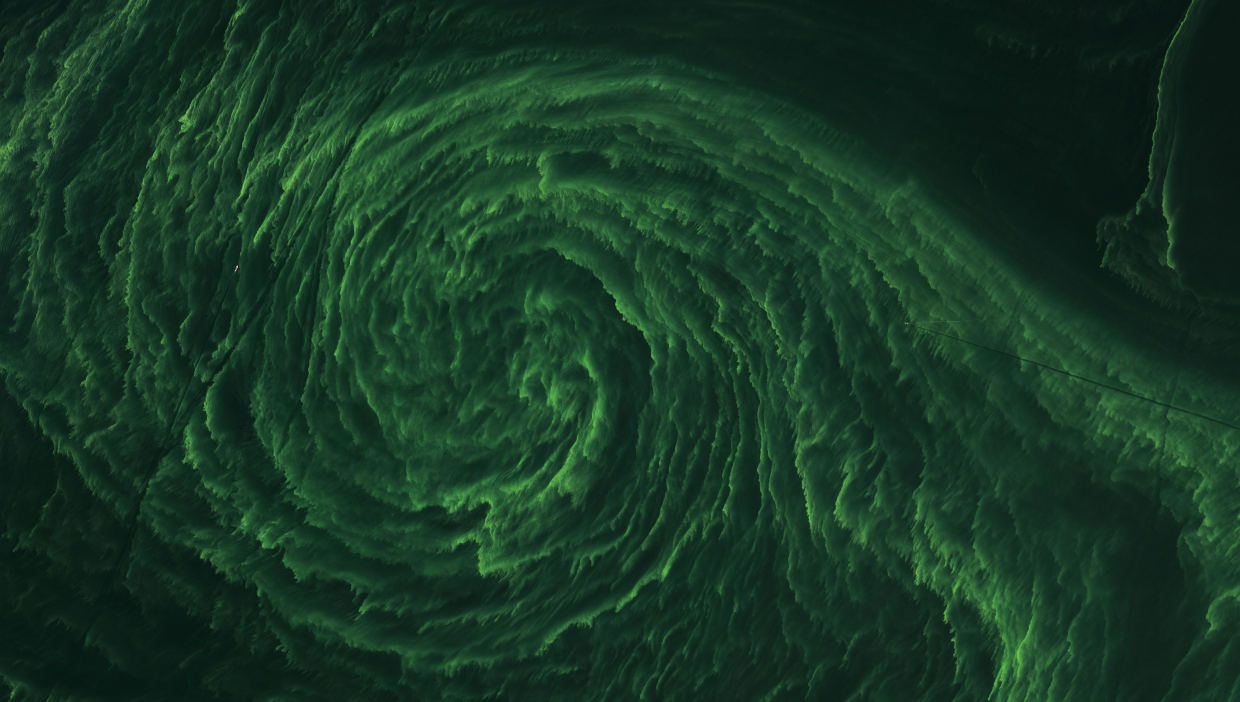Algal Galaxy

The Baltic Sea regularly turns a vibrant blue-green in summer. This is caused by the bloom of cyanobacteria, in this case off the eastern coast of Götland, Sweden. These microscopic organisms concentrate in locations where the vertical and horizontal water movements generate the best nutrient and light conditions for algal growth, and these hotspots are then drawn out by the water circulation. Note the straight, dark lines in the image: the bloom has been stirred up by powerful ship’s propellors.
Satellite data can track the growth and spread of harmful algae blooms in order to alert and mitigate against damaging impacts for tourism and fishing industries.
Recent UZH-led research (Abolfazl et al. 2024) on freshwater algae in Lake Geneva showed that a certain sequence of meteorological conditions triggered an algal bloom in 2021: heavy rainfall promoting excessive organic matter and nutrients loading, followed by wind-induced coastal upwelling, and a prolonged period of warm, calm weather.
Source: Modified Copernicus Sentinel-2 data (2018) / Google Earth Engine
Are you interested in this topic?
At the University of Zurich, several researchers are actively studying water systems with multispectral satellite observations. See howProf. Alexander Damm at the Department of Geography observes natural water systems with his research group Remote Sensing of Water Systems or check out the scientific article on the research on Algae bloom in Lake Geneva.
Are you a student that wants to learn more about this topic? Consider enrolling in these courses:
GEO 233: Remote Sensing and Geographic Information Science III (Basics of Remote Sensing)
GEO 443: Advanced Technologies and Methods in Active Remote Sensing
GEO 371: Remote Sensing and Geographic Information Science V (Remote Sensing Methods)
GEO 442: Advanced Technologies and Methods in Passive Remote Sensing